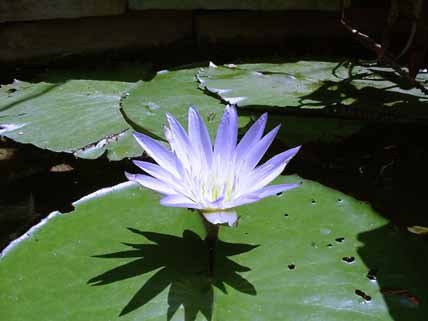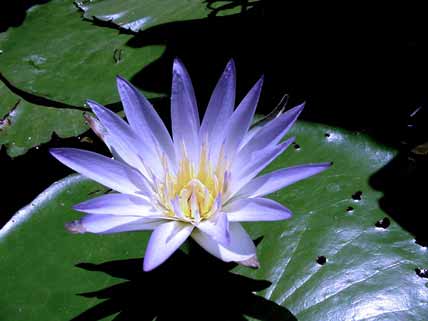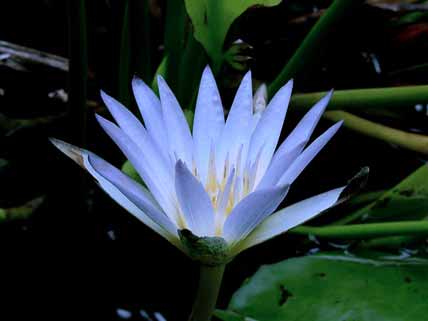|
Ancient
Egypt by Sjef Willockx |
||
|
Unlike the white lotus, the blue one has straight, sharply pointed petals. It is the one that is most frequently depicted on Egyptian paintings and reliefs. The flower of the blue lotus opens in the morning, to close again at nightfall. This reminded the Egyptians of the daily cycle of the sun’s rising and setting. So like those of the sun, the recurring motions of the lotus flower came to be seen as a promise of rebirth - and thereby the lotus became a symbol for eternal life. © Clair Ossian
Another aspect that seemed deeply meaningful to the
Egyptians was the blue lotus’s strong, pervasive scent: a perfume,
somewhat reminiscent of hyacinths. Guests at a banquet were given blue lotus
flowers, to hold to their nose: a scene often depicted.
He [Amun-Re] found her as
she slept in the beauty of her palace. She waked at the fragrance of the
god, which she smelled in the presence of his majesty. (..) When he came
before her, she rejoiced at the sight of his beauty, his love passed
into her limbs, which the fragrance of the god flooded; all his odors
were from Punt. The emergence of the lotus bud from beneath the water table, followed by its unfolding to perfect beauty, was for the Egyptians an image of the emergence of the sun god from the primordial waters of Nun, at the moment of creation. That is why in one tableau of creation, the birth of the sun god is portrayed as the appearance of a young boy, coming out of an opening lotus blossom. © Clair Ossian The blue lotus also had his very own god: Nefertem. He is depicted as a man with on his head a large, blue lotus flower, often topped with two tall objects of uncertain meaning. Nefertem was at home in Memphis, where he was incorporated into a triad, together with two other Memphite gods: Ptah and Sakhmet. Already in the Pyramid Texts, mention is made of him. The king says: “I appear as Nefertem, as the lotus-bloom which is at the nose of Re” (Pyr. 266). © Clair Ossian In the Book of the Dead, there are two spells with the same caption: “Spell for being transformed into a lotus” (Spells 81A and 81B). And in the vignette to Spell 81A, it is again the blue lotus that we see.
Back to start Previous Next Thumbnails
|
|
|
|
|
All materials on this site are protected by copyright. All copyright by Sjef Willockx, unless otherwise indicated. |


